The 1927 Silver Dollar value depends on mint mark, condition, and errors. San Francisco “S” coins are most valuable with only 866,000 minted, followed by Denver “D” and Philadelphia (no mint mark) versions. Circulated coins trade near silver value, while uncirculated examples command significant premiums. Error coins like doubled motto can fetch $90+ in uncirculated condition, and die brake errors may reach $200. Value factors include coin condition, mint mark location, specific errors, and rarity. The 1927-S and 1927-D are among the rarest Peace Dollar dates, making them highly sought after by collectors and investors alike.
The 1927 Peace Dollar stands as one of the most intriguing years in the entire Peace Dollar series, not because of widespread production, but precisely the opposite. With three mint facilities producing vastly different quantities, these coins present a fascinating case study in how mintage numbers directly translate to collector value. Whether you’ve inherited a coin from this year or you’re actively building a Peace Dollar collection, understanding the specific characteristics and values of each 1927 variant can mean the difference between a modest silver find and a significant numismatic treasure.
Understanding the 1927 Peace Dollar Mintage Story
The year 1927 marked a significant contraction in silver dollar production across all United States mints. Following the Pittman Act requirements being fulfilled and with silver dollar demand declining, Congress drastically reduced authorized mintages. This created what collectors now recognize as some of the scarcest Peace Dollars in the entire series.
The Philadelphia Mint produced 848,000 coins without a mint mark, the Denver Mint struck just 1,268,900 pieces bearing the “D” mint mark, and most significantly, the San Francisco Mint produced only 866,000 coins marked with an “S.” These numbers become even more meaningful when you consider that millions of Peace Dollars were melted in subsequent decades, particularly during the 1960s silver shortages. Survival rates for circulated 1927 Peace Dollars sit considerably lower than original mintage figures suggest, with estimates indicating that fewer than 30% of originally minted coins remain in any condition today.
The mint mark location remains consistent across all Peace Dollars: look on the reverse side, just below the word “ONE” and above the eagle’s tail feathers. This small letter determines whether you’re holding a common date worth modest premiums or a key date commanding serious collector attention.
1927 Philadelphia Peace Dollar Values (No Mint Mark)
Despite being the lowest mintage Philadelphia Peace Dollar up to that point in the series, the 1927 coin without a mint mark remains the most accessible of the three variants from this year. In heavily circulated condition grading Good to Fine (G-4 to F-12), these coins typically trade for $32 to $38, representing a small premium over their silver melt value, which fluctuates around $23 to $25 based on current silver prices.
The value landscape changes dramatically as condition improves. An About Uncirculated specimen (AU-50 to AU-58) showing minimal wear commands $85 to $145. Once you cross into the uncirculated range, prices escalate further. A coin grading Mint State 60 (MS-60) sells for approximately $160 to $180, while an MS-63 specimen with better luster and fewer contact marks fetches $245 to $285.
| Grade | Value Range |
|---|---|
| G-4 to F-12 | $32 – $38 |
| AU-50 to AU-58 | $85 – $145 |
| MS-60 | $160 – $180 |
| MS-63 | $245 – $285 |
| MS-64 | $425 – $525 |
| MS-65 | $1,200 – $1,800 |
High-grade examples become exponentially rarer and more valuable. An MS-64 specimen typically sells for $425 to $525, while the coveted MS-65 grade commands $1,200 to $1,800 according to recent Heritage Auctions sales data from 2023. At the MS-66 level and above, populations drop to single or low double digits, with prices exceeding $5,000 for exceptional examples.
The relatively higher mintage compared to the Denver and San Francisco issues means collectors can acquire circulated examples without significant difficulty, making this an accessible entry point for those assembling a date-and-mint Peace Dollar set.
1927-D Denver Peace Dollar: The Mid-Range Key Date
The 1927-D represents a sweet spot in Peace Dollar collecting: scarce enough to command substantial premiums but not so rare that most collectors can never acquire one. With 1,268,900 pieces originally struck, this issue saw the highest mintage of the three 1927 variants, yet it remains a semi-key date that serious collectors actively pursue.
In circulated grades from Good through Very Fine (G-4 to VF-30), expect to pay $40 to $65 for a 1927-D Peace Dollar. The jump to Extremely Fine (EF-40 to EF-45) pushes values to $70 to $95, while About Uncirculated examples (AU-50 to AU-58) trade for $110 to $185.
| Grade | Value Range |
|---|---|
| G-4 to VF-30 | $40 – $65 |
| EF-40 to EF-45 | $70 – $95 |
| AU-50 to AU-58 | $110 – $185 |
| MS-60 | $190 – $225 |
| MS-63 | $325 – $425 |
| MS-64 | $625 – $850 |
| MS-65 | $2,400 – $3,500 |
The uncirculated market for 1927-D Peace Dollars shows consistent strength. An MS-60 specimen sells for $190 to $225, while an MS-63 brings $325 to $425. The MS-64 grade level, where most coins show strong eye appeal with only minor contact marks, commands $625 to $850. At MS-65, where luster remains vibrant and marks become minimal, values jump to $2,400 to $3,500.
What makes the 1927-D particularly interesting is the prevalence of softly struck examples. The Denver Mint frequently struggled with strike quality on Peace Dollars, and 1927 was no exception. Many coins show weakness on Liberty’s hair details and the eagle’s tail feathers. Well-struck examples with full central details command premiums of 15% to 25% above standard pricing guides at all grade levels.
1927-S San Francisco: The Crown Jewel
The 1927-S Peace Dollar stands as one of the most desirable dates in the entire Peace Dollar series, rivaling even the famous 1928-P in collector demand. With only 866,000 pieces minted and estimated survival rates below 25%, this coin represents a genuine rarity that anchors advanced Peace Dollar collections.
Even heavily worn examples maintain strong value floors. A 1927-S grading Good to Very Good (G-4 to VG-8) sells for $45 to $60, while Fine to Very Fine specimens (F-12 to VF-30) command $65 to $90. The jump to Extremely Fine (EF-40 to EF-45) brings $95 to $135, and About Uncirculated pieces (AU-50 to AU-58) trade for $145 to $235.
| Grade | Value Range |
|---|---|
| G-4 to VG-8 | $45 – $60 |
| F-12 to VF-30 | $65 – $90 |
| EF-40 to EF-45 | $95 – $135 |
| AU-50 to AU-58 | $145 – $235 |
| MS-60 | $275 – $350 |
| MS-63 | $525 – $725 |
| MS-64 | $1,250 – $1,850 |
| MS-65 | $5,500 – $8,500 |
The uncirculated market reveals the true scarcity of this issue. An MS-60 specimen sells for $275 to $350, while an MS-63 commands $525 to $725. At MS-64, where populations become quite thin, prices reach $1,250 to $1,850. The MS-65 grade level represents the practical ceiling for most collectors, with values ranging from $5,500 to $8,500 based on Stack’s Bowers and Heritage Auctions results from 2022-2023.
Beyond MS-65, the 1927-S becomes exceptionally rare. Fewer than 50 examples grade MS-66 across all grading services combined, with those specimens selling for $15,000 to $25,000. A single PCGS MS-67 example sold at auction in 2021 for $84,000, demonstrating the premium that condition rarity commands on this already scarce issue.
The San Francisco Mint typically produced Peace Dollars with superior strikes compared to Denver, and many 1927-S coins exhibit sharp details across Liberty’s hair and the eagle’s feathers. This quality, combined with the low mintage, makes the 1927-S a cornerstone acquisition for serious collectors.
Notable Errors and Varieties Worth Hunting
While the 1927 Peace Dollars aren’t known for dramatic major varieties like doubled dies found on other coin series, several notable errors and minor varieties add interesting collecting opportunities and potential value premiums.
The 1927-D Doubled Motto variety shows doubling on the motto “IN GOD WE TRUST” visible under magnification. This variety appears on a small percentage of 1927-D production and typically adds $15 to $45 to standard values in circulated grades. In uncirculated condition, a clear doubled motto example grading MS-63 or higher can command $90 to $175 premium over standard specimens, according to Greysheet pricing data.
Reverse die breaks appear occasionally on all three mint marks, with the most dramatic examples showing raised lines or cracks across the eagle or rays. A 1927-S with a significant die break sold on eBay in early 2023 for $285 in AU-55 condition, approximately $75 over typical AU-55 pricing. A 1927 Philadelphia coin with a prominent reverse die brake error listed for $200 or best offer, though actual sale prices for such varieties depend heavily on the error’s visibility and the coin’s overall condition.
Struck-through errors occur when foreign material sits between the die and planchet during striking, leaving an impression on the finished coin. A 1927-D with a struck-through cloth fiber error graded AU-50 sold for $165 in 2023, representing roughly a $45 premium over standard AU-50 values.
Off-center strikes remain rare on Peace Dollars since quality control at all three mints typically caught such dramatic errors. A 1927 Philadelphia coin struck 5% off-center sold at Heritage Auctions for $425 in 2022, despite grading only VF-30, demonstrating that dramatic errors override condition considerations for many collectors.
Minor planchet flaws, including laminations and small clips, appear occasionally but typically add only modest premiums of $10 to $30 unless the flaw is particularly dramatic and the coin grades uncirculated.
When evaluating error coins, authentication by PCGS or NGC becomes essential for valuable pieces. The grading services authenticate errors, protecting buyers from altered or damaged coins misrepresented as errors.
Grading Considerations That Impact Your Coin’s Value
Understanding how professional grading services evaluate Peace Dollars helps you accurately assess what you own and make informed buying decisions. The grading standards specifically impact 1927 Peace Dollars in predictable ways based on the original strike quality from each mint.
Circulated Grade Key Points (G-4 through AU-58): Even heavily circulated Peace Dollars maintain collector value above silver content due to the series’ popularity. In Good condition (G-4), the rim should remain complete with all major design elements visible though heavily worn. Fine grade (F-12) shows wear across Liberty’s hair with individual strands merged but her ear visible. Very Fine (VF-20) displays moderate wear with Liberty’s hair showing definition but high points worn smooth. Extremely Fine (EF-40) exhibits light wear on high points with most hair detail visible. About Uncirculated (AU-50 to AU-58) shows only slight wear on Liberty’s cheek, hair above the ear, and the eagle’s breast, with 50% to 90% of original mint luster remaining.
Uncirculated Grade Distinctions (MS-60 through MS-70): At MS-60, a coin shows no wear but may have heavy contact marks, poor luster, or weak strike. This grade often represents coins stored in bags where they contacted other coins repeatedly. MS-63 displays moderate contact marks concentrated in less visible areas, good luster, and acceptable strike. This grade represents the most common uncirculated grade for 1927 Peace Dollars and offers solid eye appeal at relatively accessible prices.
MS-64 marks a significant jump in quality and price. Coins at this level show minimal contact marks visible only under magnification, strong luster, and better-than-average strike. MS-65 represents the grade where Peace Dollars become genuinely scarce across all dates. At this level, only tiny contact marks appear in the field, luster remains vibrant and undisturbed, and strike quality reaches near-full detail.
Strike Quality Variations: The 1927-D particularly suffers from strike inconsistency. Look for full hair detail above Liberty’s ear and complete feather definition on the eagle’s tail. A weakly struck 1927-D grading MS-64 might sell for $625, while a sharply struck example at the same grade commands $775 to $850.
Luster Characteristics: Original mint luster dramatically affects value at all uncirculated grades. Peace Dollars display a characteristic satiny luster when fresh from the mint. Coins cleaned or improperly stored show diminished or altered luster, often resulting in grade reductions or “Details” grades from services like PCGS and NGC that acknowledge the coin’s surface problems.
Professional Grading Investment: For any 1927 Peace Dollar grading AU-55 or higher, professional grading by PCGS or NGC typically pays for itself through increased buyer confidence and realized value. A raw 1927-S claimed to be MS-64 might struggle to sell for $1,000 due to buyer skepticism, while the same coin in a PCGS MS-64 holder readily achieves $1,250 to $1,500.
Building Your Collection Strategy Around 1927 Peace Dollars
The three 1927 Peace Dollar variants offer different strategic opportunities depending on your collecting goals and budget. For collectors assembling a complete date-and-mint set of Peace Dollars, all three 1927 coins represent necessary acquisitions, but timing and grade selection significantly impact your total investment.
Budget-Conscious Approach: Acquiring circulated examples of all three 1927 variants remains achievable for most collectors. A strategy targeting Very Fine to Extremely Fine grades allows you to obtain all three coins for a combined $175 to $275. Start with the 1927 Philadelphia coin in VF-30 ($35 to $45), add the 1927-D in EF-40 ($70 to $85), and complete the trio with a 1927-S in VF-30 ($70 to $85). This approach provides solid examples of these important dates without requiring significant capital outlay.
Mid-Range Quality Focus: Collectors seeking attractive coins with moderate investment might target About Uncirculated to MS-63 grades. A 1927 Philadelphia in MS-63 ($245 to $285), a 1927-D in AU-58 ($145 to $185), and a 1927-S in AU-58 ($185 to $235) creates a visually appealing trio for $575 to $705 total investment. This range offers strong eye appeal while avoiding the exponential price increases at MS-64 and above.
Investment-Grade Strategy: Serious collectors building registry sets or investment-quality holdings focus on MS-64 and MS-65 examples. At these grade levels, the 1927-S becomes the challenging piece. A complete set of 1927 Peace Dollars in MS-64 grade requires approximately $2,300 to $3,225 total investment, with the 1927-S consuming more than half that budget. At MS-65, you’re looking at $9,100 to $13,800 for all three coins, with the 1927-S alone representing $5,500 to $8,500 of that total.
Timing Your Purchases: Peace Dollar values fluctuate with silver prices, overall coin market trends, and specific demand cycles. The metals market directly impacts floor values for common dates in circulated grades. When silver prices dip, base values for circulated 1927 Philadelphia coins might drop to $28 to $32, creating acquisition opportunities. Conversely, high-grade examples follow numismatic market trends more than precious metal prices. Major auctions featuring significant Peace Dollar collections can temporarily depress prices through increased supply, creating strategic buying opportunities.
Where to Source Quality Examples: Heritage Auctions, Stack’s Bowers, and Great Collections regularly offer certified 1927 Peace Dollars across all grade ranges. For raw coins, established dealers specializing in classic U.S. coins provide better quality and more accurate grading than general marketplaces. Online communities like the PCGS Forums and Collectors Universe forums offer marketplace sections where collectors buy and sell coins, often at better prices than retail dealers but with appropriate due diligence required.
Authenticating Your 1927 Peace Dollar
Given the significant values attached to higher-grade 1927 Peace Dollars, particularly the San Francisco issue, authentication and counterfeit detection skills become essential. Several characteristics help verify genuine 1927 Peace Dollars and identify potential problems.
Weight and Size Specifications: All genuine Peace Dollars weigh 26.73 grams with a tolerance of approximately 0.1 grams. Diameter measures 38.1mm. A precise scale capable of measuring to 0.1 grams provides the first authentication checkpoint. Counterfeits often miss these specifications by measurable amounts, though sophisticated fakes may hit weight targets through careful alloy selection.
Silver Content Verification: Peace Dollars contain 90% silver and 10% copper. A simple magnet test eliminates many counterfeits since silver is non-magnetic. More sophisticated testing using specific gravity calculations or electronic precious metal analyzers provides definitive composition verification. A genuine Peace Dollar displays specific gravity of approximately 10.34, measurable through water displacement testing.
Mint Mark Examination: Counterfeiters sometimes add mint marks to common dates or alter dates entirely. Under magnification, genuine mint marks show the same flow lines and surface texture as the surrounding field. Added mint marks often appear sharper or show different surface characteristics. The 1927-S particularly requires scrutiny since its value premium makes it a target for mint mark addition to cheaper 1927 Philadelphia coins.
Surface and Luster Analysis: Genuine Peace Dollars display characteristic satiny luster created by the minting process. Cast counterfeits show porous, grainy surfaces under magnification. Even high-quality struck counterfeits rarely replicate the precise luster characteristics of genuine coins.
Design Detail Quality: Authentic Peace Dollars exhibit crisp, precise design details even when circulation-worn. Liberty’s hair strands, the eagle’s feathers, and the lettering all show consistent depth and sharpness appropriate to the coin’s grade. Counterfeits often show soft or mushy details, particularly in complex areas like Liberty’s hair.
Professional Certification Value: For any 1927 Peace Dollar valued above $200, professional grading and authentication by PCGS or NGC provides essential protection. The services guarantee authenticity and grade, offering financial compensation if their assessments prove incorrect. Certification costs range from $25 to $125 depending on service tier and coin value, representing inexpensive insurance against counterfeit losses on valuable pieces.
Maximizing Your Investment When Selling
Understanding market dynamics and sales channels helps you achieve fair value when the time comes to sell your 1927 Peace Dollars. Different selling methods suit different coin types and owner priorities.
Professional Auction Houses: For high-grade examples grading MS-64 or above, particularly the 1927-S, major auction houses like Heritage, Stack’s Bowers, and Great Collections provide access to serious collectors willing to pay strong prices for quality material. Auction houses typically charge seller’s fees of 5% to 10% but deliver maximum visibility to motivated buyers. A 1927-S grading MS-65 might achieve $7,500 to $8,500 through a major auction compared to $6,000 to $6,500 through a quick dealer sale.
Dealer Direct Sales: Selling directly to dealers provides immediate liquidity but typically realizes 60% to 75% of retail value for common material. The percentage improves for scarce, high-grade pieces where dealers maintain active want lists. A 1927-D in MS-64 might bring 75% to 80% of retail value from a dealer specializing in Peace Dollars who has a specific customer seeking the coin.
Online Marketplaces: Platforms like eBay provide access to broad buyer markets but require seller expertise in photography, description, and buyer interaction. Successful eBay sales typically achieve 85% to 95% of professional auction results after factoring in selling fees of 12% to 15%. This channel works best for sellers willing to invest time in the sales process and comfortable managing buyer questions and potential disputes.
Private Treaty Sales: Selling directly to other collectors through forums or local coin clubs eliminates intermediary fees but requires networking and negotiation skills. This method works particularly well for mid-grade material where both parties can achieve better outcomes than traditional dealer transactions.
Timing Market Sales: Peace Dollar values fluctuate with precious metal prices and general numismatic market trends. Selling during periods of strong silver prices lifts values for circulated common-date material. High-grade rarities respond more to broader coin market trends, often performing best when overall collectibles markets show strength. Patience to wait for optimal market conditions can mean 15% to 25% value improvements versus distressed sales during market weakness.
Your Next Steps in Peace Dollar Collecting
Armed with comprehensive knowledge about 1927 Peace Dollar values, authentication, and market dynamics, you can approach these coins with confidence whether buying, selling, or simply evaluating inherited pieces. The 1927 issue represents a fascinating case study in how mintage numbers, survival rates, and strike quality combine to create a diverse value landscape within a single year.
If you’re just beginning your Peace Dollar collection, the 1927 Philadelphia coin in circulated grades offers an affordable entry point into this important year. As your budget and interest grow, adding the 1927-D and ultimately the key-date 1927-S creates satisfying collecting milestones. For advanced collectors, pursuing high-grade certified examples of all three variants provides both aesthetic enjoyment and solid investment potential backed by genuine scarcity and consistent collector demand. Start examining coins in hand, join online collecting communities, and visit local coin shows to develop the hands-on experience that transforms book knowledge into practical expertise.
You may be interested:
- 1859 Indian Head Penny Coin Value Complete Errors List And No Mint Mark Worth Guide For Collectors
- 1911 V Nickel Coin Value Guide Complete Errors List And No Mint Mark Worth Today
- 1902 Dime Coin Value Complete Errors List With O S And No Mint Mark Worth Guide
- 1788 Quarter Coin Value Complete Guide Errors List And D S P Mint Mark Worth Revealed
- 1776 To 1976 Bicentennial Half Dollar Coin Value Complete Errors List And What Your D S And No Mint Mark Coins Are Actually Worth
- 1990 Penny Coin Value Errors List How D S And No Mint Mark Pennies Are Worth Thousands Of Dollars

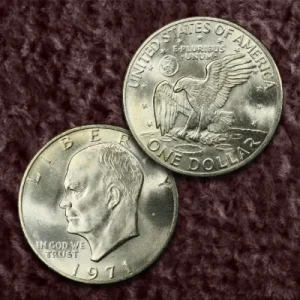
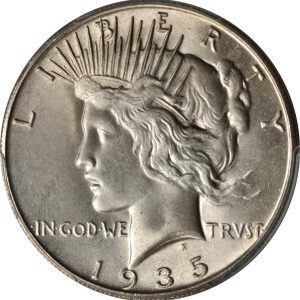
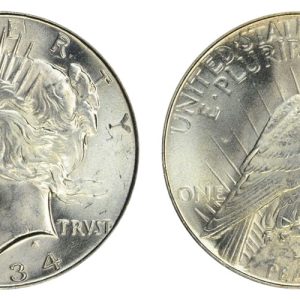
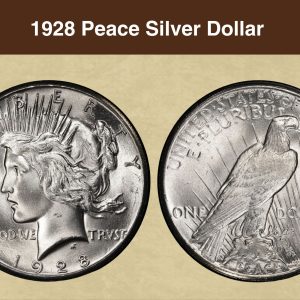
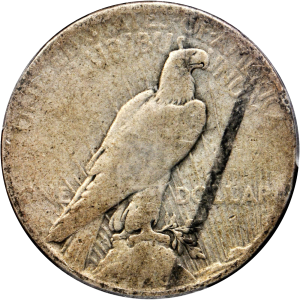
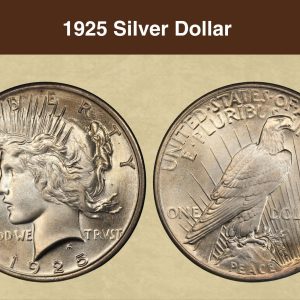
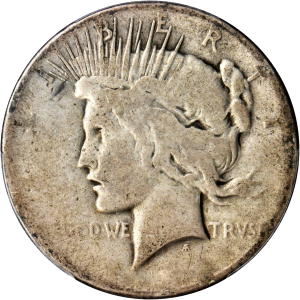
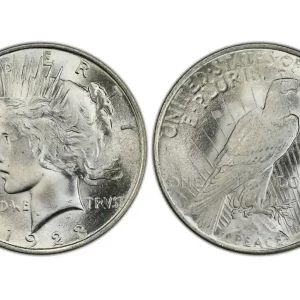
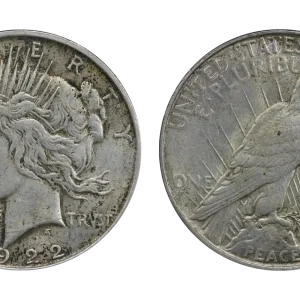
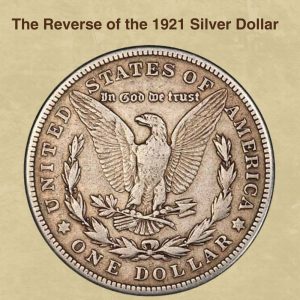
What is a 1927 Liberty silver dollar worth?
A 1927 silver dollar’s value ranges from approximately $45 for a circulated coin to over $22,500 for a pristine, uncirculated example. The specific value depends heavily on the coin’s condition, mint mark (Philadelphia, Denver, or San Francisco), and any potential errors, which can significantly increase its worth.
Where is the mint mark on a 1927 Peace silver dollar?
Location: Reverse of the coin, near the bottom. No mint mark: Philadelphia “D”: Denver “S”: San Francisco
How many 1927-D Peace dollars were minted?
Congress limited total mintages of Peace silver dollars to the number of Morgans melted in 1918. By 1927, that quota was getting near and mintages had dwindled greatly. The 1927-D mintage of just 1,268,900 proved to be the lowest for the Denver Mint in the series.
What makes a 1927 silver dollar rare?
San Francisco (S) Peace Dollars The rarest “S” Peace Dollar was minted by the San Francisco Mint in 1927. Only 866,000 Peace Dollars were produced that year, compared to the next lowest mintage number, which was 1,011,000 in 1934.